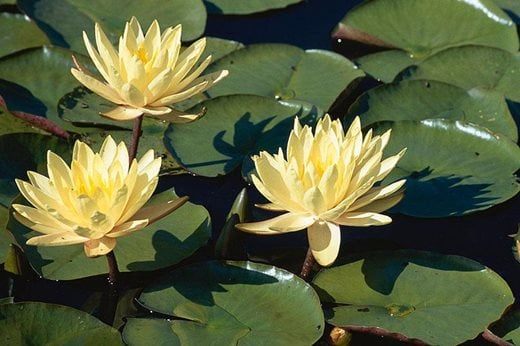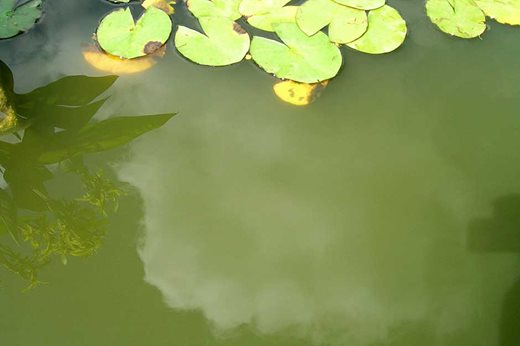 Feed large aquatic plants, especially waterlilies, if their growth or flowering last year was poor. Insert aquatic slow-release fertiliser tablets well below soil level around the base of the plant.
Feed large aquatic plants, especially waterlilies, if their growth or flowering last year was poor. Insert aquatic slow-release fertiliser tablets well below soil level around the base of the plant.
Continue dividing or cutting back marginal and bog garden plants if overcrowded.
Divide and replant waterlilies once they show signs of growth.
Contain vigorous pond perennials by wrapping the roots in hessian, or planting in re-used aquatic plant baskets and topping with a layer of gravel to prevent fish stirring up the compost.
Small plants can be raised up on bricks when first introduced, then incrementally lowered to the bottom of the pond as the plants increase in size.
Tidy up plants in bog gardens, and mulch with composted bark (or similar – avoiding manure if there is a chance that water may run off into a pond).
Troubleshooting
 Don’t worry if the water in your pond suddenly turns from clear to greenish – it’s natural for a certain amount of algae to grow in the spring as life begins to stir after the winter. If the problem persists for more than a few weeks, consider adding more floating and oxygenating plants to help clear the water.
Don’t worry if the water in your pond suddenly turns from clear to greenish – it’s natural for a certain amount of algae to grow in the spring as life begins to stir after the winter. If the problem persists for more than a few weeks, consider adding more floating and oxygenating plants to help clear the water.

